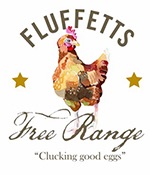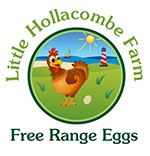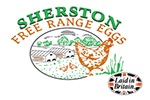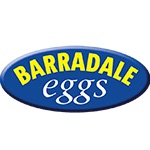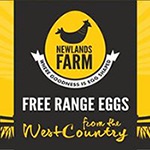The Met. Office are suggesting further outbreaks of very hot weather this Summer. Following reports received of increased mortality in flocks, both FR and enriched cage, in the recent spell, it seems advisable to remind ourselves of the effects of heat stress on layers.
It will be remembered that the “neutral zone” of temperature, i.e. that at which the laying hen is most comfortable, is 18 - 25°C. Above that, the bird needs to take action to maintain it’s core body temperature at 41°C. It does this in three different ways:-
Behaviour – such as panting with open beak, spreading wings to increase exposed body surface and getting as close to cooler surfaces as possible.
Biochemistry – uses more oxygen and blood CO2 decreases. There are changes in the level of potassium, disrupting cellular function.
Physiology – the adrenal cortex is stimulated, leading to an increase in corticosteroid secretion. This leads to suppression of the immune system.
Heat stress manifests itself in a number of practical signs, which should be observed by the stockman.
|
Food Consumption |
↓ |
|
Egg Production |
↓ |
|
Egg Weight |
↓ |
|
Shell Quality |
↓ |
|
Albumen Height |
↓ |
|
Mortality |
↑ |
|
Cannibalism |
↑ |
|
Immunosuppression |
↑ |
Water : Food ratio increases from 2:1.
The hen has four ways in which to lose excess heat from the body.
- Direct heat loss from the body to surroundings, mostly in the form of infrared waves.
- Contact of the body with a colder object.
- Loss of heat to air moving over the surface of the body.
- Water loss through the beak during panting carries heat from the body. The heat is there generated as energy to produce the water loss as water vapour.
The evaporation of water by open-beak breathing gives a loss of 450 calories for every 1g water expelled.
The bird attempts to replace this body water by increasing the amount drunk. This only takes place if the water on offer is relatively cool.
Water flow should be > 70ml/minute/nipple, and attempts should be made to keep the water temperature below 25°C. Tanks should be insulated and water lines should be flushed through in the afternoon.
Routine tasks should be carried out early in the morning, or at night.
If misters are installed, activate for 2 minutes in 10. Consider spraying the roofs.
Ventilation is also most important. Fans should be run all night and if possible, install extra auxiliary fans in the house.
Air Flow should be 1m² inlet area per 14,000 m³/house exhaust fan capacity.
Enriched cage birds are able to use all the methods of heat loss, but have limited chance to shed heat by conduction. Air flow in the aisles can be increased by horizontally mounted auxiliary fans.
Feeding regime needs to alter.
Avoid feeding in the middle of the day. If giving a 1-2 hour “night feed”, it is essential to give 3 hours darkness both before and after the “feed” period, to maintain the lighting programme.
As we saw with Cold Stress, Vit. C has an antioxidant ability, which improves immune function.
Normally, chickens synthesise Vit. C in the kidneys, but need extra under conditions of heat stress.
Vit. C improves the humoral immune response. It also alleviates the effects of heat stress by decreasing synthesis and secretion of corticosteroids.
A surge of corticosteroids causes muscle protein breakdown, which might increase oxidative stress.
During heat stress, the birds eat less and drink more. This alters the morphology of the gut, leading to proliferation of E. coli and Salmonella.
It may also trigger outbreaks of necrotic enteritis. The gut is the most responsive organ to heat stress.
Heat stress also reduces immune function.
At temperatures above 25°C and especially 30°C, Vit. C is needed for absorption of Vit. D into it’s metabolic form, which is essential for calcium metabolism and egg and bone calcification. At the same time, it promotes mineral mobilisation from bones, thus increasing plasma calcium levels.
It is wise to supplement Vit. C by 150mg/kg diet, which has been shown, for example, to improve egg weight and quality in 39 week-old layers in temperatures of 35°C.
Don’t forget that, although given room to carry out normal activities, temperatures inside enriched cages will be above those of the surrounding environment.
Even at lower temperatures just above 25°C, addition of 1kg Vit. C per tonne of feed, maintained egg production in groups of layers.
So, anti-heat actions should be taken at the earliest opportunity when hot weather is forecast, to maintain production, but first and foremost, to ensure the welfare of the birds.

